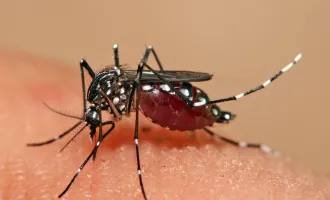
In Solidarity with Global Youth Climate Strike: Medical Students Take Action
On Friday Sept. 20, millions of students worldwide went on strike from school to demand swift action on climate change.
Many were inspired to strike by 16-year-old activist Greta Thunberg, who with stark moral clarity has called out world leaders for their failure to preserve the climate for future generations.
Medical students and physicians have also been inspired by Greta’s call to action.
About 20 medical students from UCSF and the UC Berkeley - UCSF Joint Medical Program joined in the Youth-led Climate Strike in San Francisco.
As a medical student, I felt drawn to strike because of the health consequences of climate change for my patients, future generations, and the people and places I love.
Like the striking youth, and the climate scientists of the United Nations Inter-governmental Panel on Climate Change (UN IPCC), I am very concerned that humanity is in a critical window of time — prior to 2030 and 2050 — to prevent the worst impacts of climate change.
According to the UN IPCC, the swiftness with which we limit emissions prior to 2030 and 2050 will determine how severe storms, wildfires, sea level rise, and heat extremes become.
How quickly we act will also influence the severity of the health impacts, which are expected to include an increase in respiratory and cardiac illness, perinatal mortality, malnutrition, displacement, and trauma.
Such impacts will hit the most vulnerable – children, older adults, low-income people, and communities of color – the hardest.
Second year medical student Nuzhat Islam joined the strike because after taking an elective course on climate change and health at UCSF, she has realized more and more the physical and mental health and social impacts of climate change on individuals.
“I am of Bangladeshi descent and one of the countries impacted by climate change is Bangladesh, in terms of the monsoons and drivers of migration,” she said. “I thought it was important to pursue any avenue to learn about climate change and to advocate.”
Third year UCSF medical student Bennett Kissel, who plans to become a child and adolescent psychiatrist, was motivated to strike because of the passion and urgency of the youth strikers, as well as his knowledge that health care itself contributes to climate change.
“I see health care as this paradox, where every patient that we treat to heal their suffering requires a certain amount of carbon emissions, and that causes a certain amount of violence to this planet and to other creatures on this planet,” he said. “So the ‘do no harm’ ethos we all believe in -- unfortunately this only rings true if we keep our heads in the ground. We have to green this health care sector. That’s our responsibility.”
At the strike, medical students had many different roles. First, we joined a group of local physicians in founding a new clinician advocacy organization called California Climate Health Now.
With this group, medical students planned and ran an “Urgent Climate Care Clinic,” giving medical excuse notes to striking students and prescribing activities to reduce one’s carbon footprint while improving health.
Medical students also marched alongside the youth. We were struck by the positive response of marchers to our participation.
“People are really hungry to have health care workers take a stance,” Kissel said. “People came up and said, ‘It’s the doctors!! Yeah!’ They were really supportive and it felt like we have an outsized voice.”
Some marchers approached first year UCSF medical student Bear Aragon, asking about her sign explaining how pollution affects cardiac health.
Aragon found that our white coats and signs “grabbed the attention of a lot of people to understand the relationship of climate change to health.”
Finally, medical students participated in legislative advocacy visits organized by California Climate Health Now.
Throughout the day, we met with staff of Speaker Nancy Pelosi, Senators Dianne Feinstein and Kamala Harris, and Representative Barbara Lee. In these meetings, medical students and physicians educated staff on the health impacts of climate change.
We told stories about our own patients’ struggles, particularly related to the wildfires of the past two years and to migration caused by drought and crop failures in Central America.
We also made specific requests of elected officials. These included using their platform to identify climate change as a health emergency and championing legislation to cut emissions on pace with the UN IPCC guidelines to limit warming to 1.5 degrees Celcius above pre-industrial levels.
“It was a very new experience for me… advocating and coming into contact with the aides of policymakers and officials,” said Islam, who shared these requests. “I learned about the structure of these meetings. It was a growing experience… I definitely think it’s a skill a health professional should have.”
As future doctors, participating in the strike aligned us with our core values of preventing harm and health inequities.
We found a sense of community, shared vision, and hope. We learned that medical student voices are essential in this fight — in this critical window of time to drawdown carbon emissions over the next decade.
Ready to Take Action as a Medical Student?
Do you want to start taking action on climate change as a medical student?First, thank you, because your voice is so needed!
Here are some tips to getting started:
- Educate yourself.Learn about climate change’s current and projected health impacts; the emissions footprint of the health care sector; and key policy prescriptions already recommended by medical organizations. You can do this through independent reading, or by taking (or creating!) an elective at your school.
- Find community. Seek out other medical students, faculty, or area physicians who share your concern about climate change and health. Kissel recommended, “Get together and see what happens!” Identify and support each other on projects such as curricular reforms, research projects and advocacy.
- Connect with your Office of Sustainability. If your school or broader university has an Office of Sustainability, they are a great resource to learn about and help lower the carbon footprint of your institution. Partnering with this office is a direct way you can cut carbon emissions at scale. No such office? Connect with the organization Health Care Without Harm to learn steps your institution can take to keep fossil fuels in the ground.


